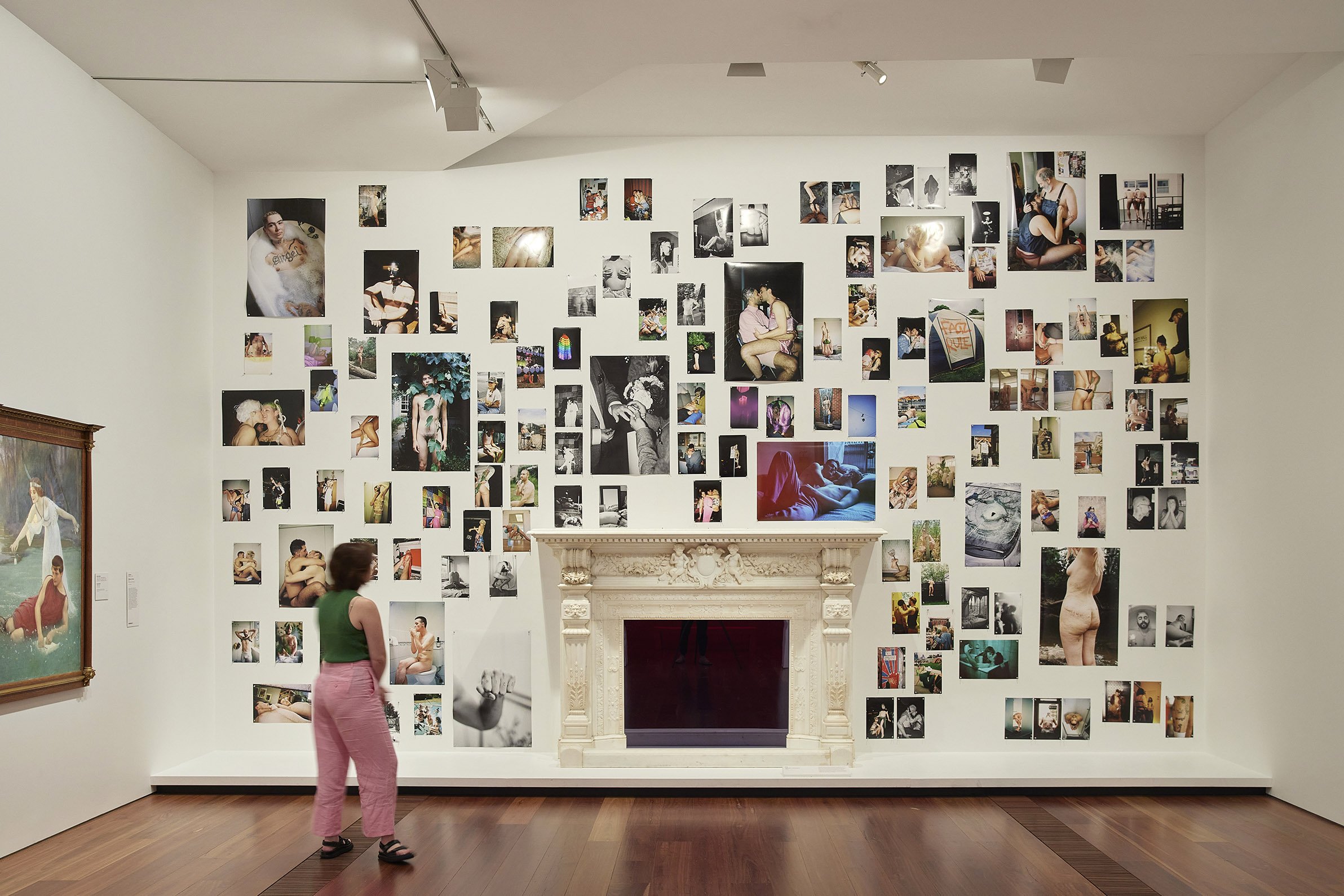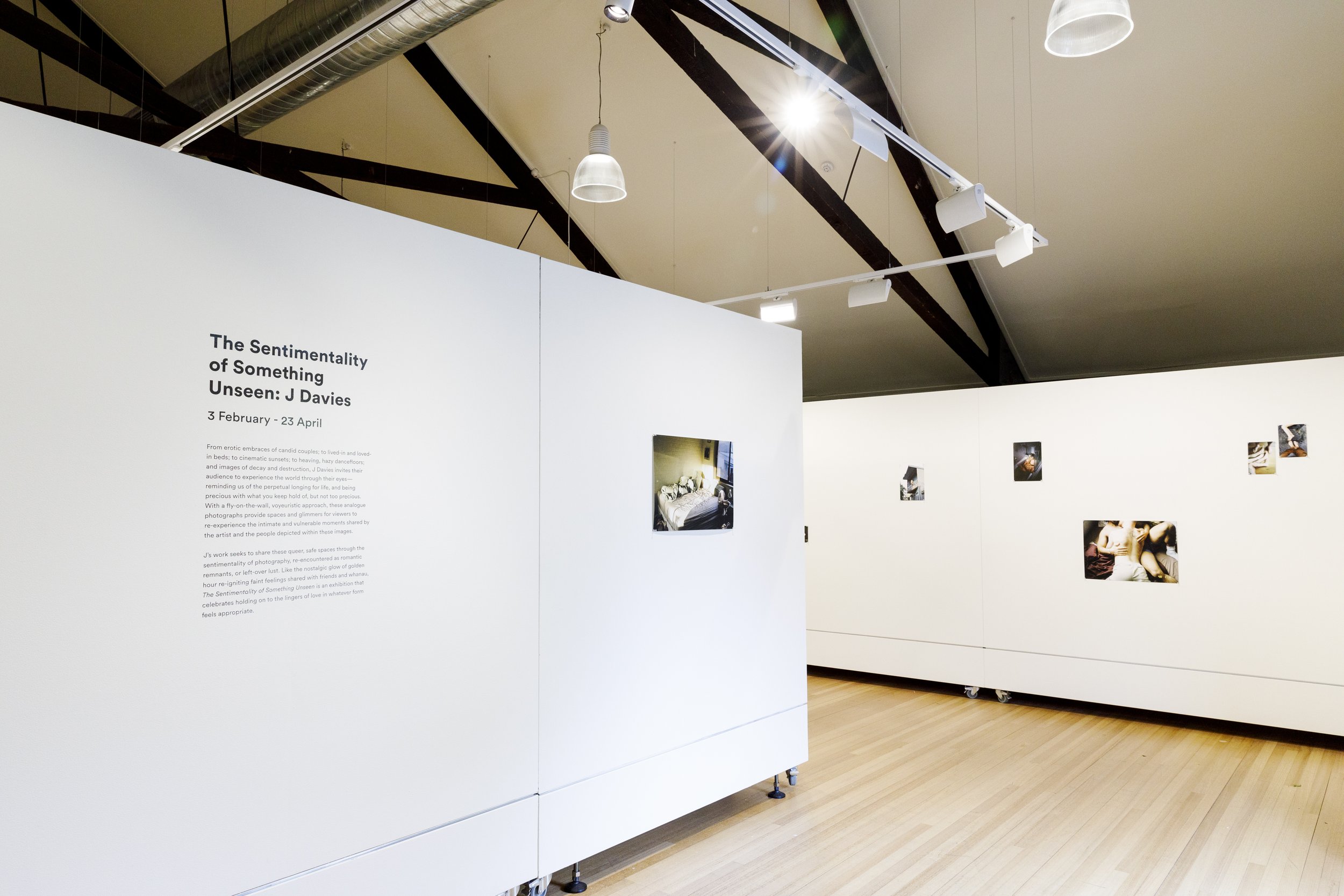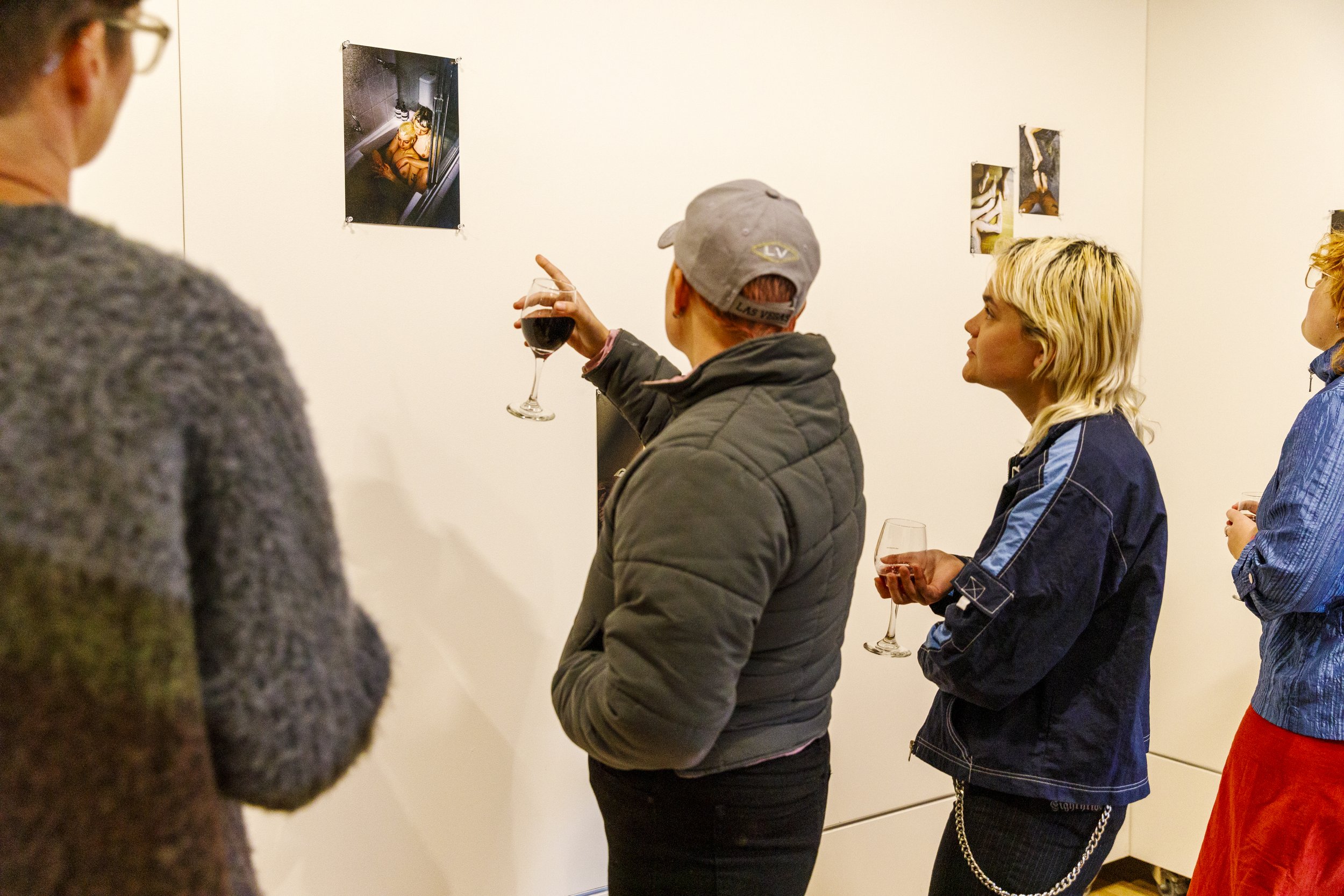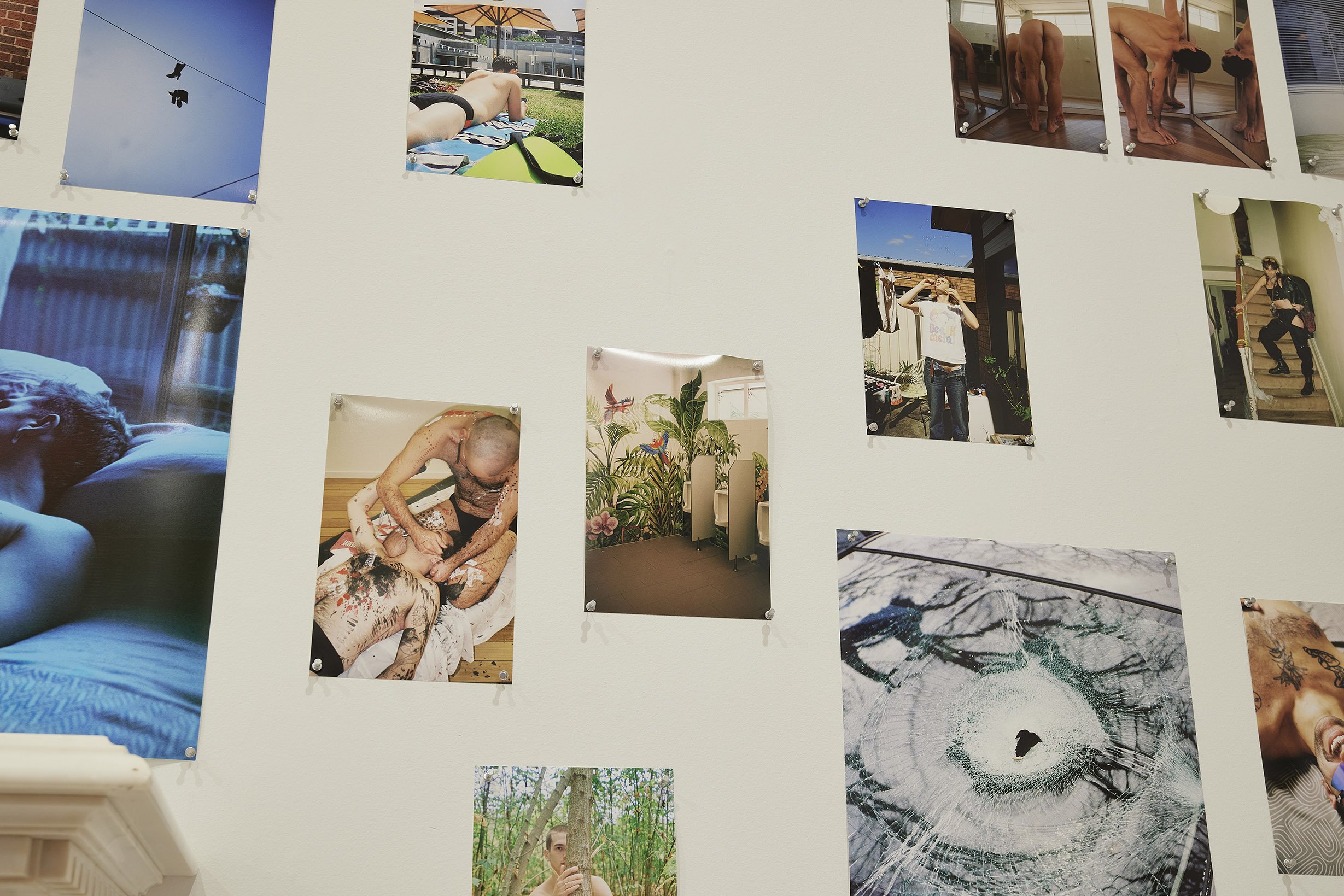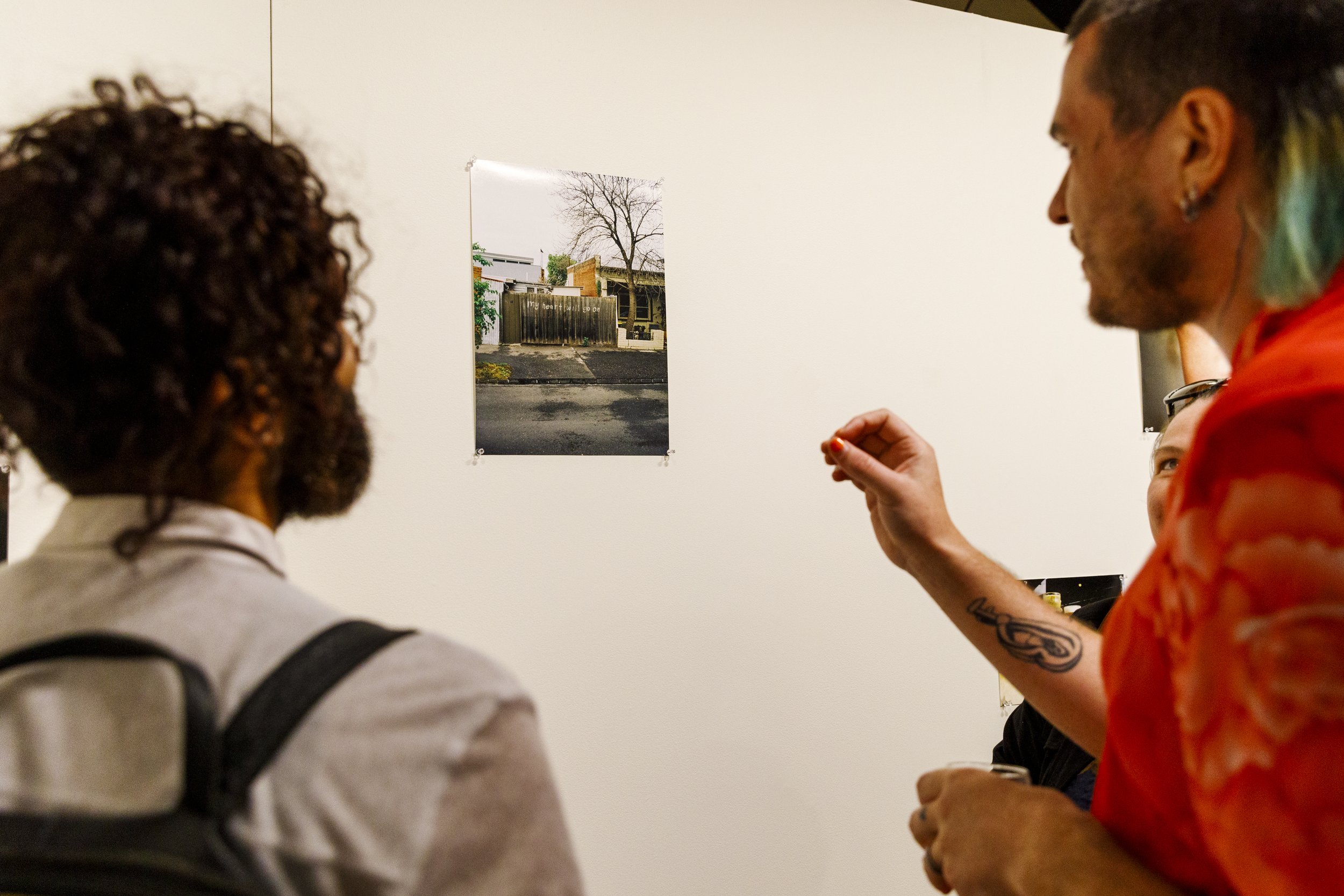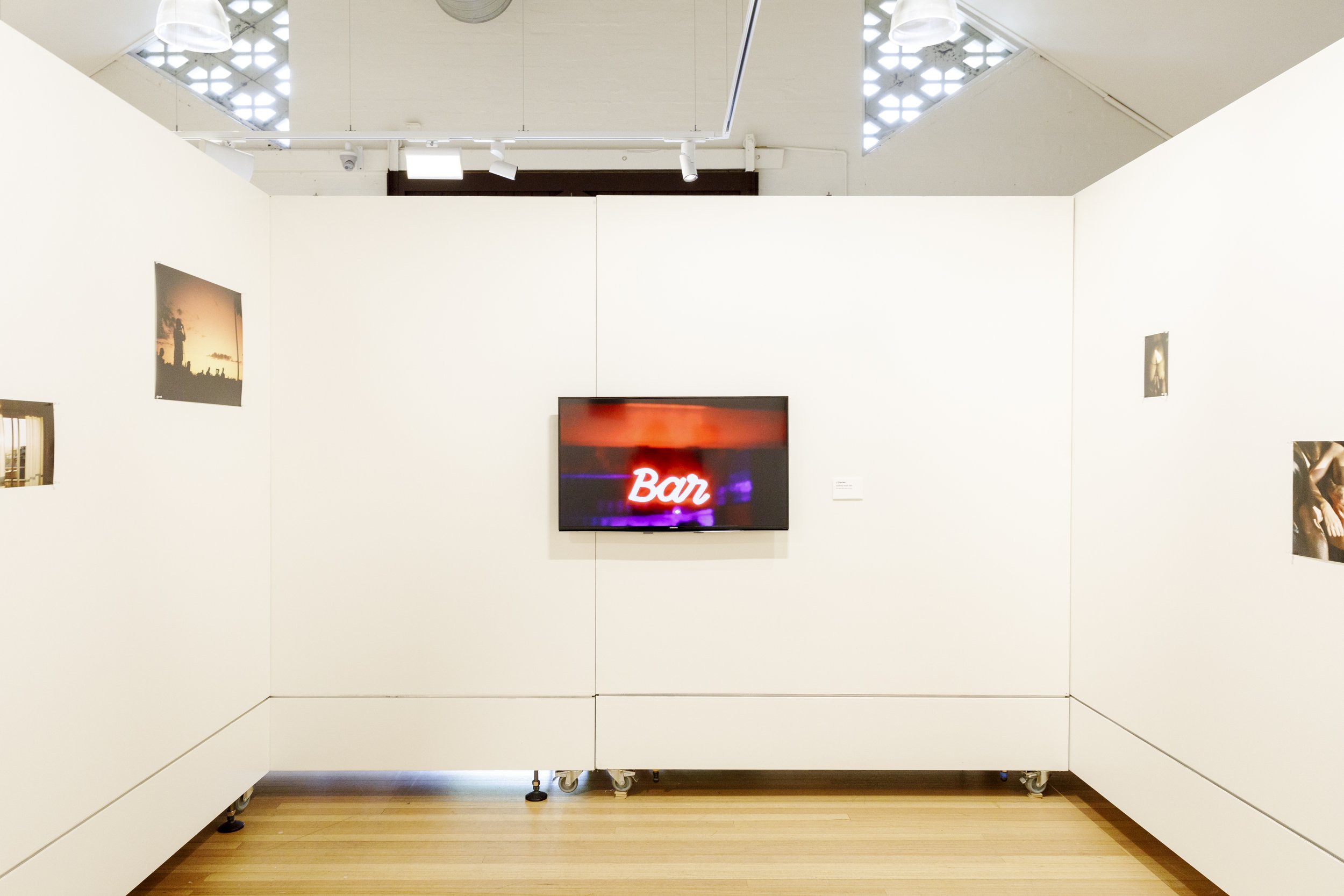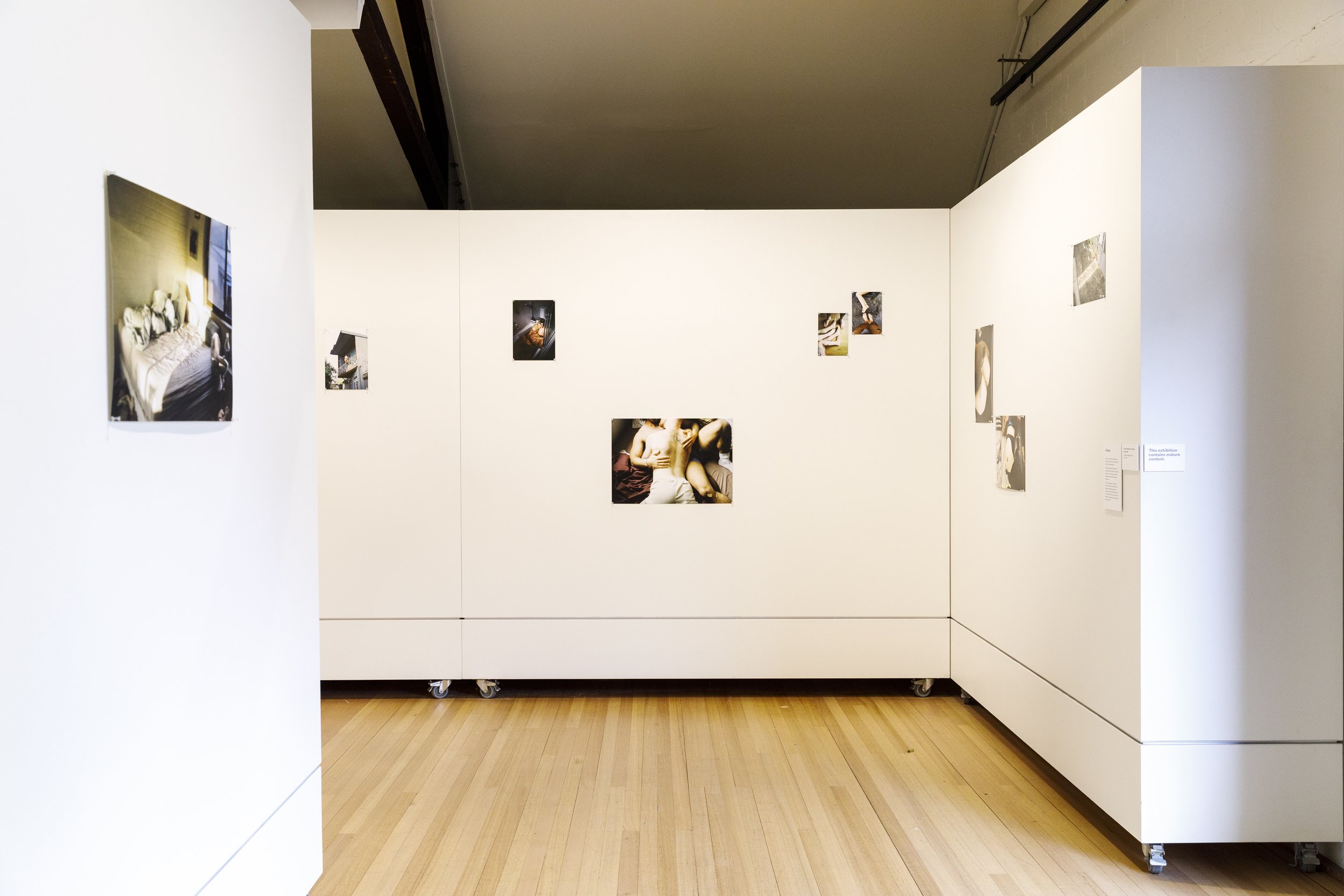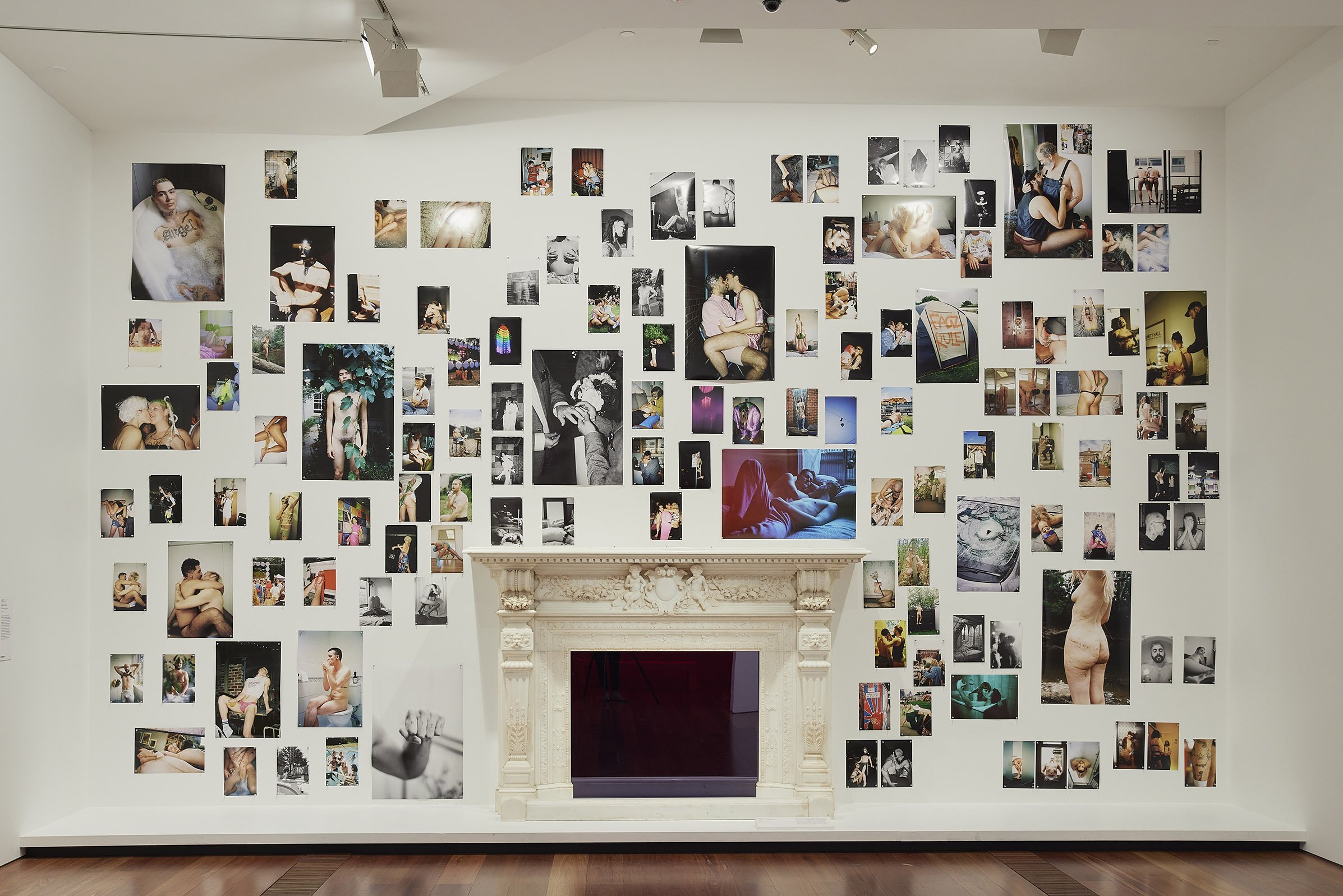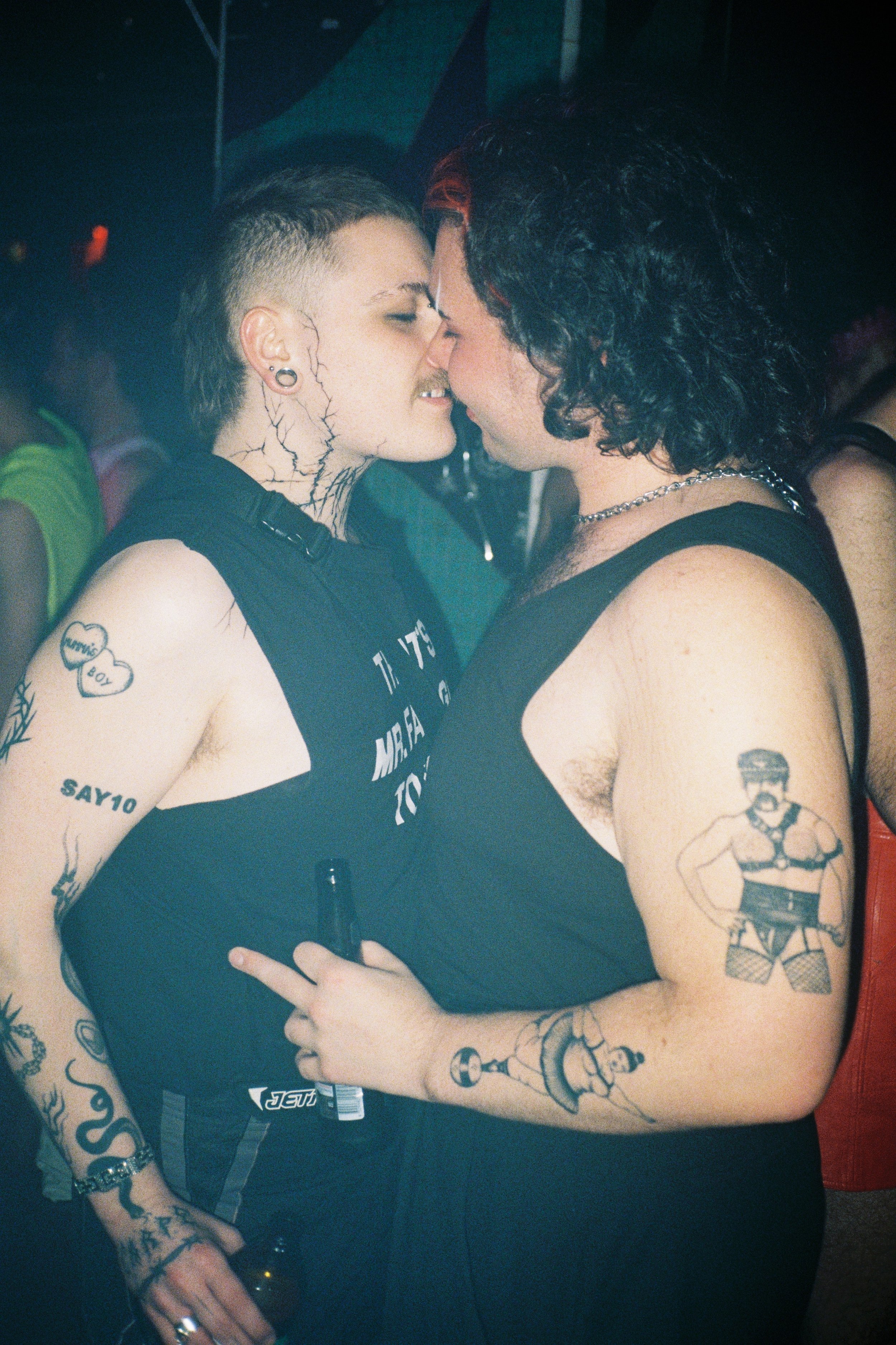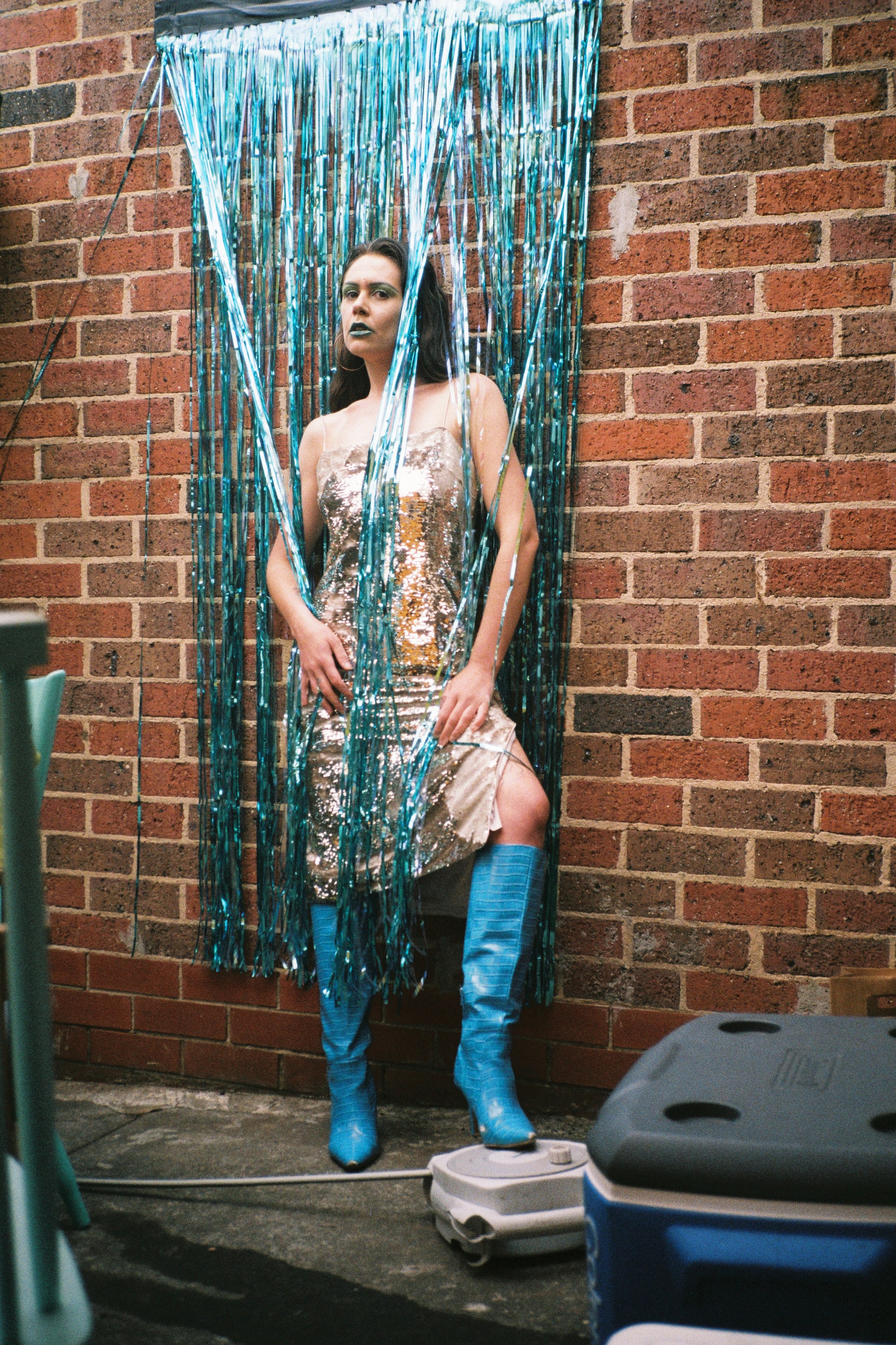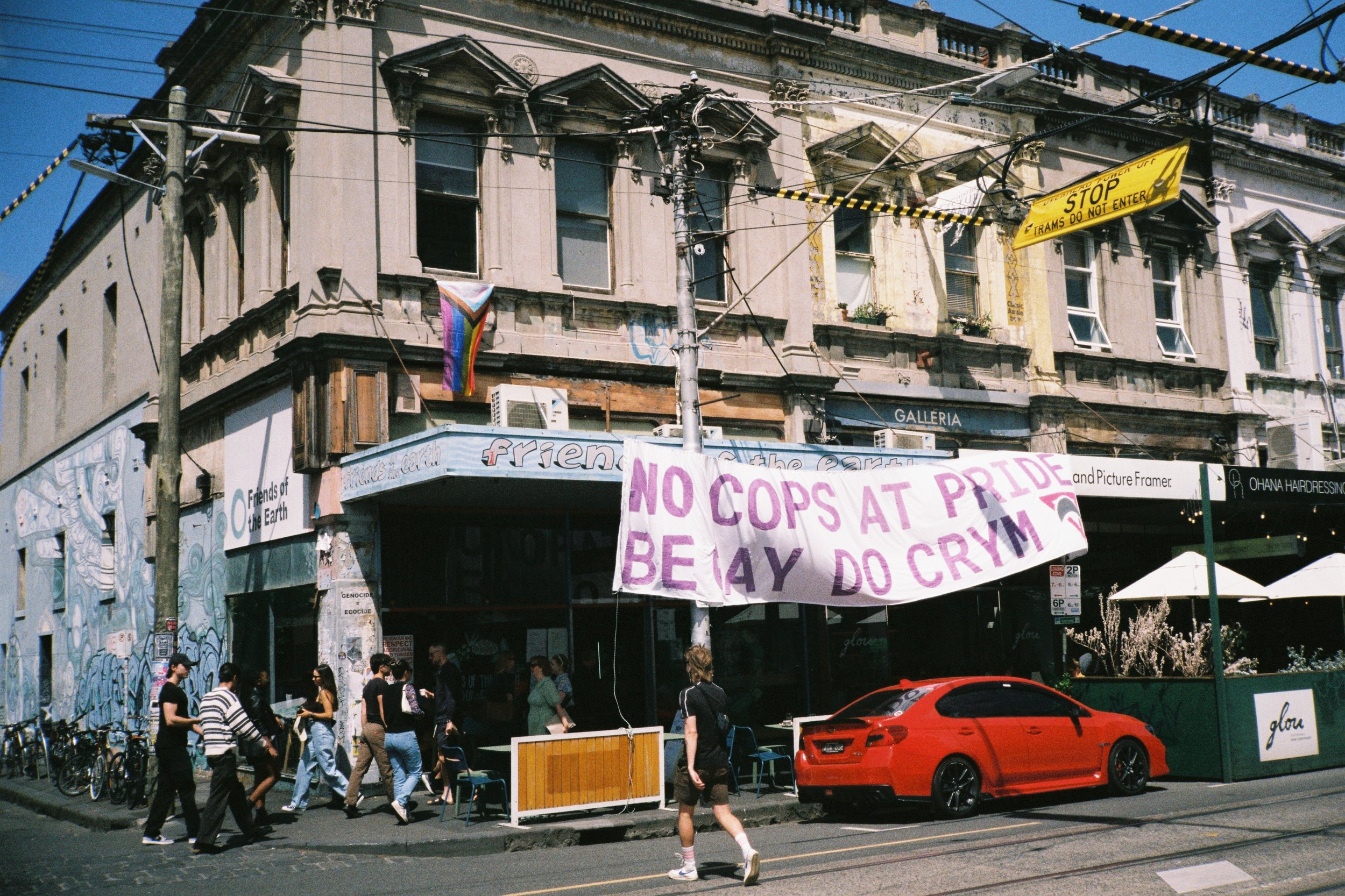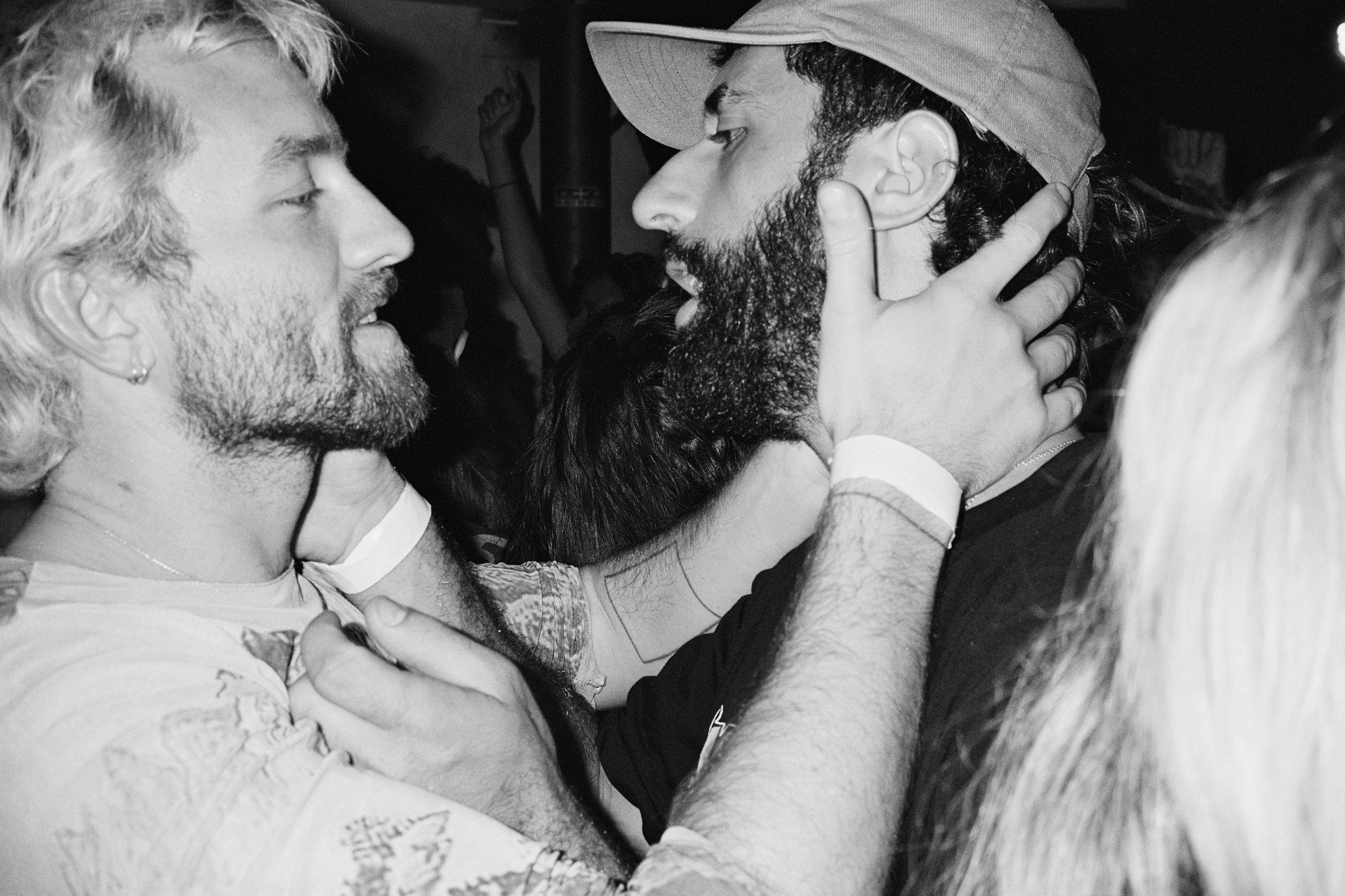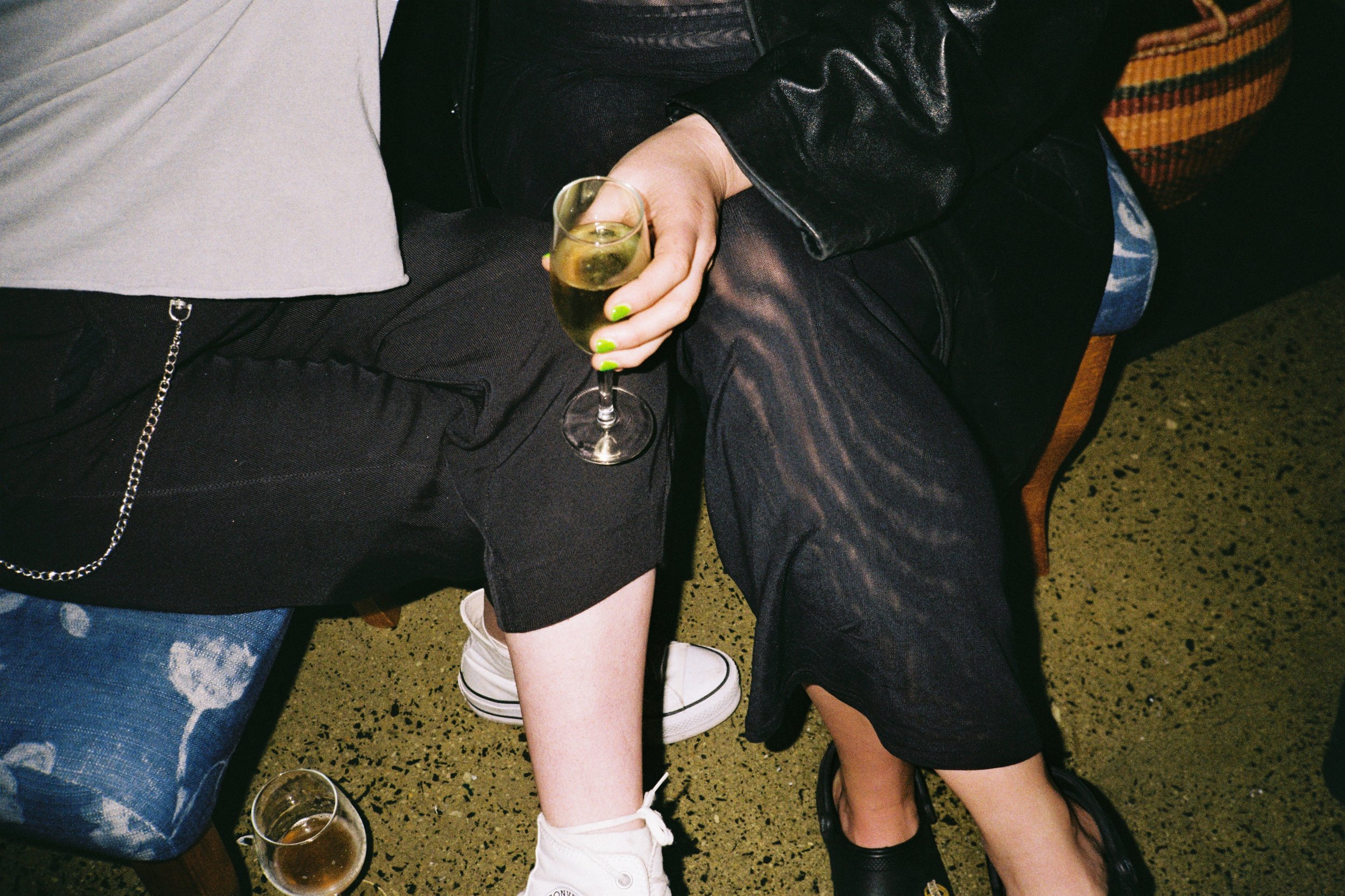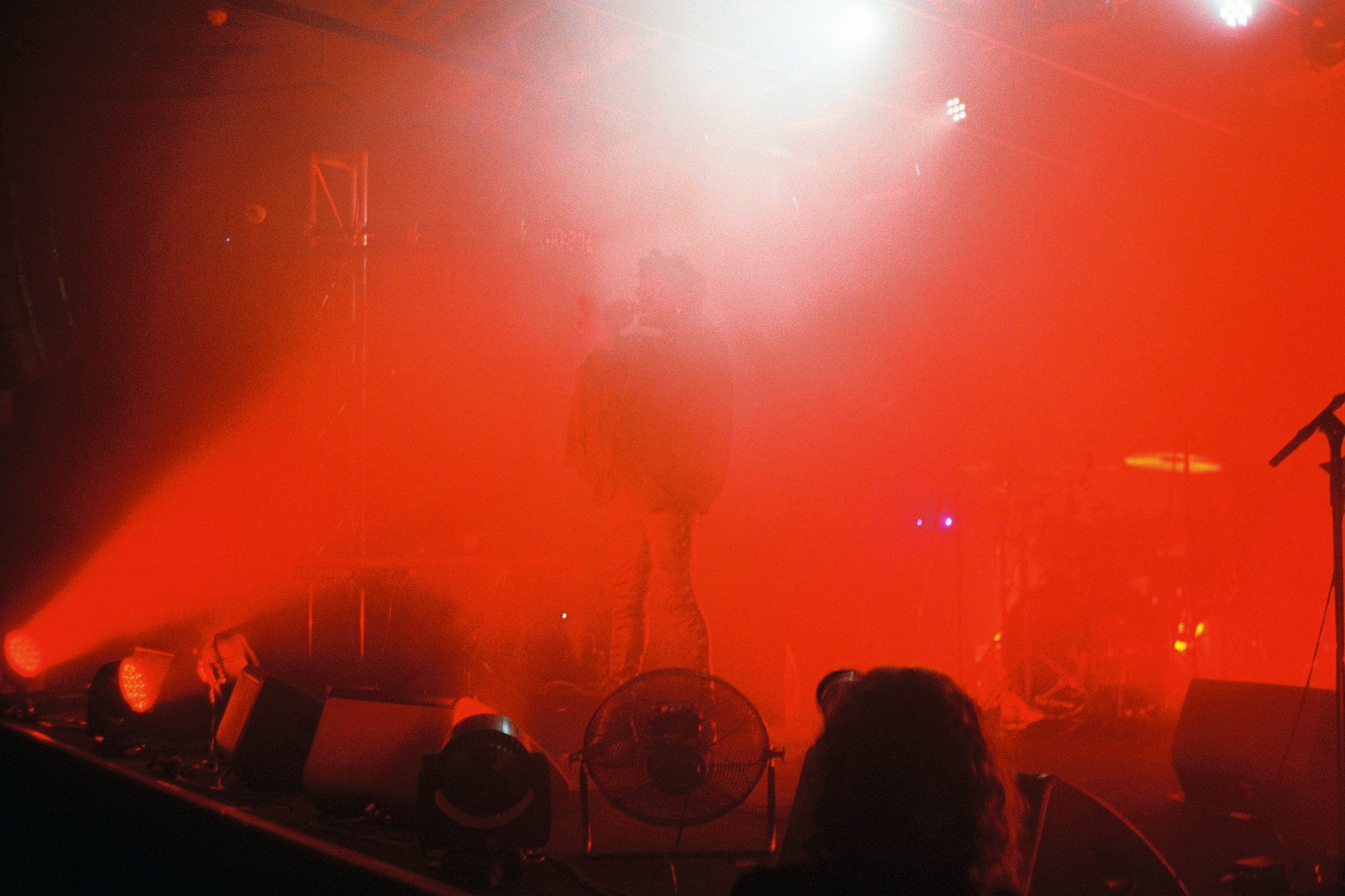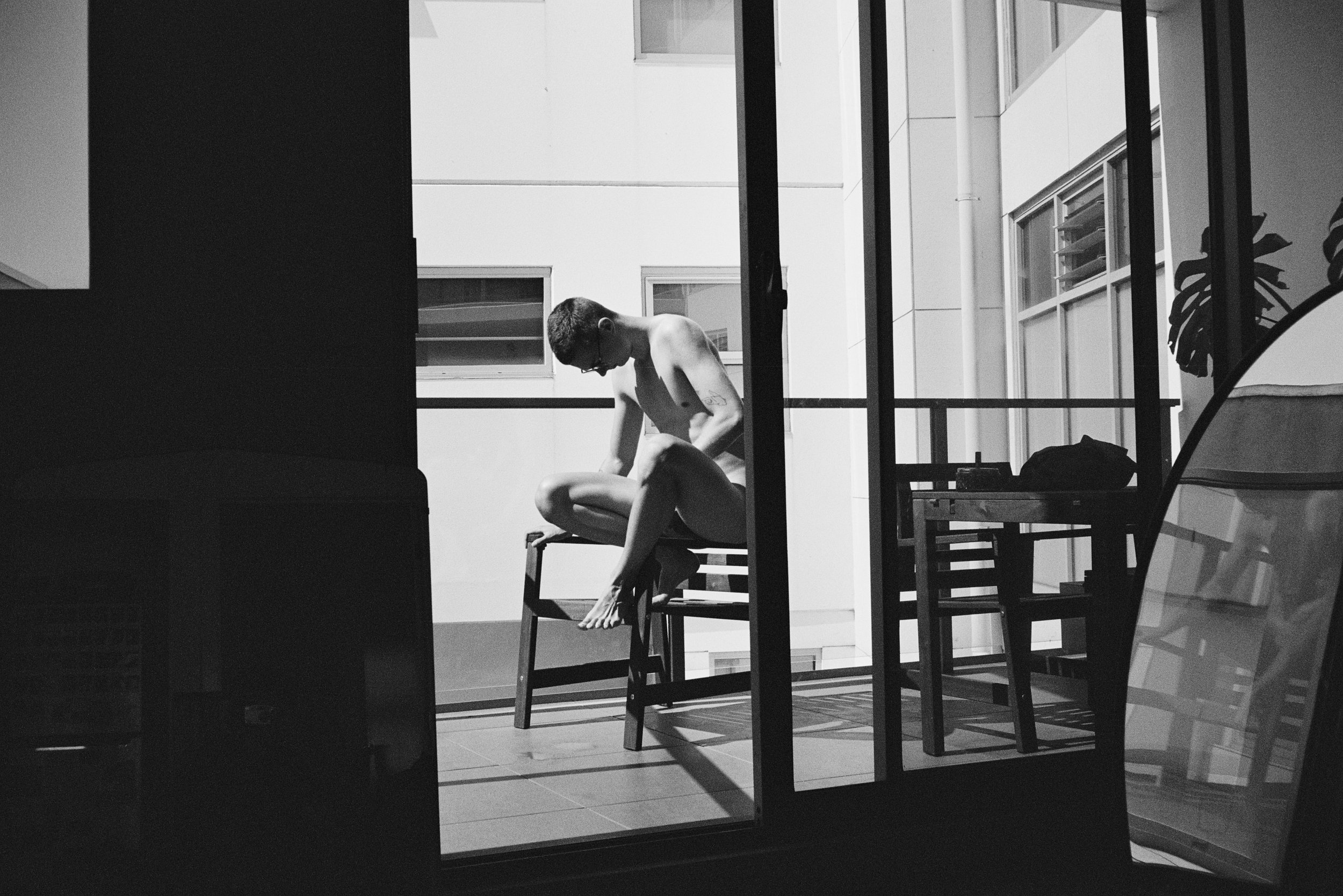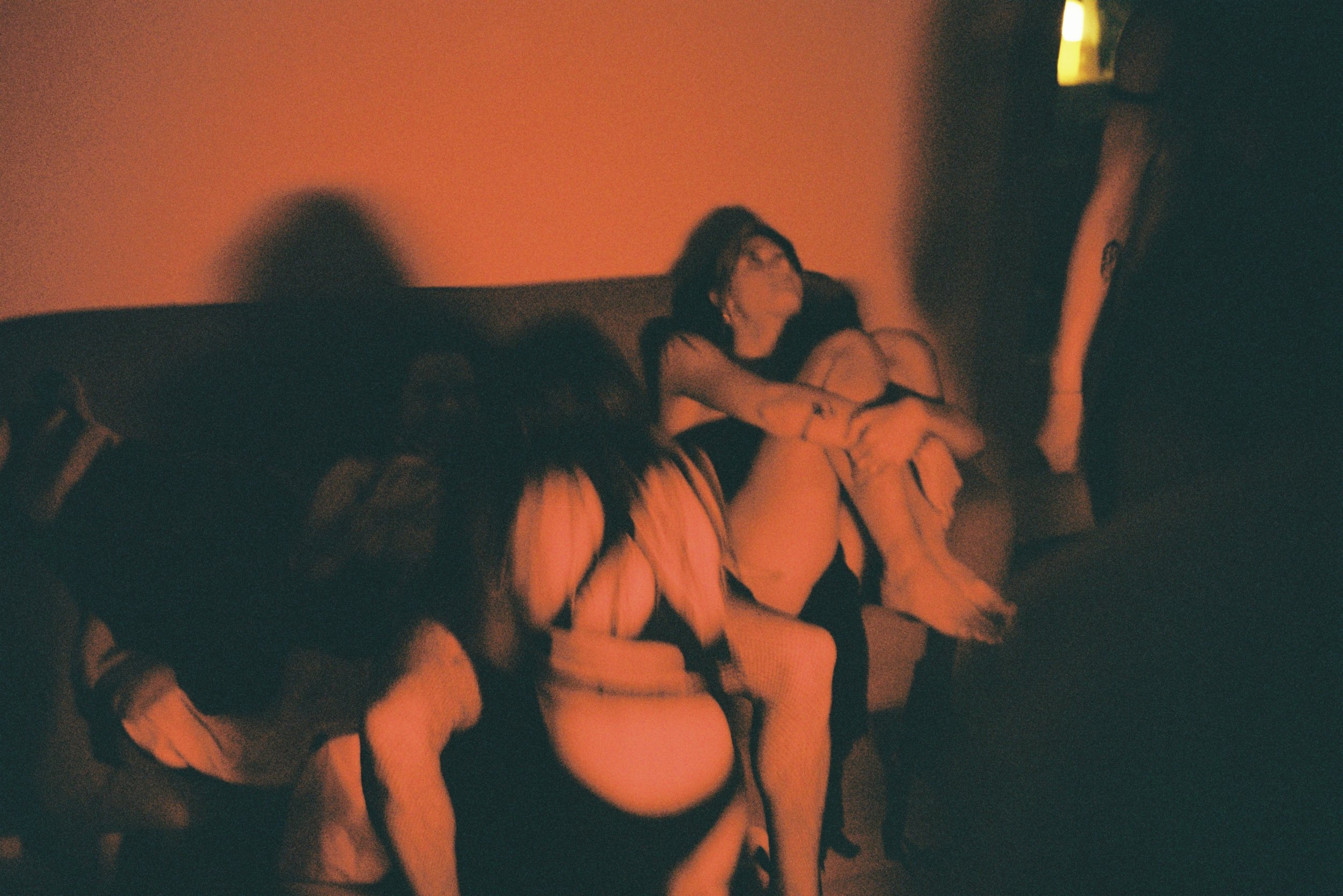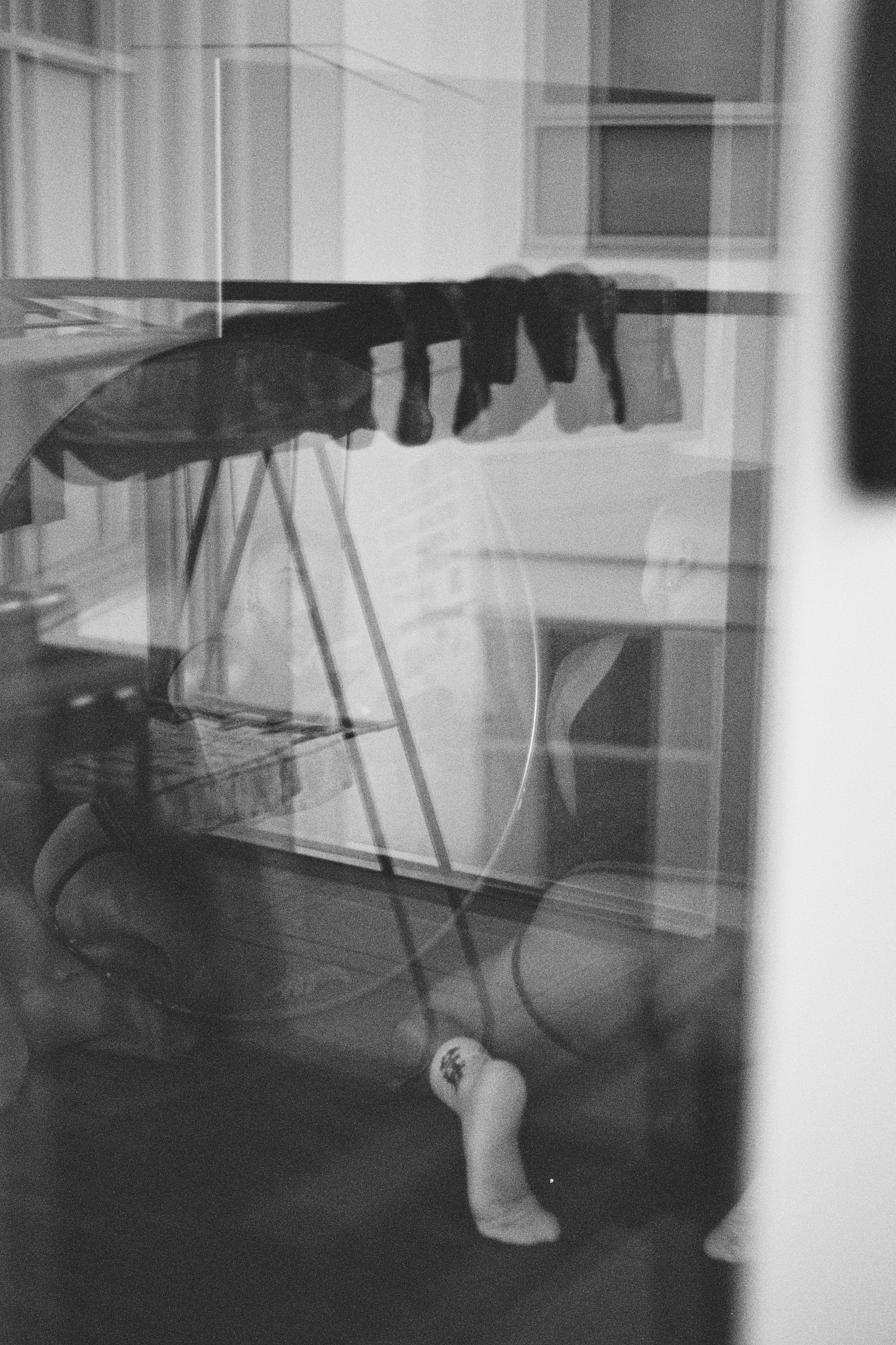J Davies' Year of Creation
It’s been just a little over a year since the release of “Half of my Whole Life Was Just a Dream” – a debut photobook by Australian born takataapui artist J Davies. An organized collection of quiet moments and radical existence, the book represents the first cohesive project J has put together as a photographer, and holds space as the first photo project (and second print project) that Pure Nowhere has had the immense privilege of publishing. As a self-taught artist whose work explores themes of memory, longing, and queer identity, J’s photographs offer an intimate look at contemporary queer and trans existence within Naarm (Melbourne) and its surrounding communities. This book serves as a catalyst for those stories — from sun-cast stomachs and hazy scenes of affection, each moment captured by J is a small celebration of life and love and all its intricacies.
In the last 12 months since this project made its entrance into the world, J has been working tirelessly to further build their career, throwing themselves at every opportunity possible. They recently opened their first solo show, "The Sentimentality of Something Unseen," back in February at Incinerator, as well as curating a body of work currently on display at the National Gallery of Victoria.
In this interview, J Davies shares their experiences with us and discusses their growth as an artist and storyteller.
It’s been one year since the release of your debut photobook, “Half of My Whole Life Was Just a Dream,” I know a lot has happened within that timespan. Could you give us a brief overview of what your life has been like within the last 12 months? Career wise, but also on a personal day-to-day basis.
Busy! I’ve been working full time as an artist and throwing myself at every opportunity possible. My schedule is pretty irregular with minimal day-to-day routine. Majority of my schedule is planned around exhibition install/deinstall, meetings with curators and art directors, writing proposals and applications, writing statements and bios. I take my cameras with me every time I leave the house so that the making part of my practice is constant. When I am, occasionally, deadline free, I will usually coordinate photo days to, again, make sure that I am constantly creating and collaborating. Making sure my practice never becomes stagnant.
So your first solo show opened just this past February, what was the curation process like for that? Can you tell us how it might have been similar, and how it was different from creating the book? Were there any skills/mindsets/habits that you learned through the organization of Half of My Whole Life that came in handy when putting together the exhibition?
When curating a body of work to exhibit I try to identify the essence of the work. Usually I will go through my archive and see which images I am drawn to and find relationships between them. Once I have identified the language and emotions I want to convey, I build from there.
When selecting works for ‘The Sentimentality of Something Unseen’ I noticed I was being drawn to warm tones and moments of support and comfort. I had also been working on a video project, editing hours worth of digital handycam footage to create a stream of consciousness, of sorts. The video became a light-hearted-longing for life - my own life. It became clear the essence of the exhibition was sentimental, I wanted to show all the memories I had been holding on to in the hopes to inspire other people to see these themes within their own lives as well.
“The video became a light-hearted-longing for life - my own life. It became clear the essence of the exhibition was sentimental, I wanted to show all the memories I had been holding on to in the hopes to inspire other people to see these themes within their own lives as well.”
What’s the most valuable thing you’ve learned about yourself through the construction and publishing of this book?
I’ve always been a dreamer, spending a lot of time inside my own mind. This book was a way to explore and share the internal workings of my mind with an audience.
Through sharing these intimate ideas and thoughts, I learned that there are so many ways in which people perceive and process the world around them. I found hearing how people understood the progression of the book, and the sequencing, to be really insightful as well. A lot of people had very unique interpretations of what was happening in the images and the reasons I’d paired things together.
The making of the book was a very cathartic process and sharing it with everyone has been really insightful.
At the time of its birth, Half of My Whole Life was the first cohesive project you had put together as a photographer – what was the significance of that for you? And how have you grown within your skills of larger storytelling?
During the book making process I was in recovery after a severe workplace injury which presented me with the time - and financial stability - to focus on refining 1 succinct, cohesive project. This was the first time I could sit with my thoughts and my archive and allow things to build over time. I’d set certain timelines with Pure Nowhere but ultimately was able to progress at my own pace.
My process has, and will continue to, shift and grow over time as I continue to learn about myself and learn new ways of articulating what it is I’m interested in sharing.
I see my archive is an ongoing exploration of myself and the people around me. It’s also a time capsule into contemporary queer and trans existence. This project felt deeply personal whilst incorporating and celebrating a plethora of other’s stories within.
“I see my archive is an ongoing exploration of myself and the people around me. It’s also a time capsule into contemporary queer and trans existence.”
This year has offered a lot of growth and exposure for you as an artist, looking specifically at the satellite program you’re participating in as a part of the Hong Kong international photography festival – that’s a massive accomplishment! How have you been feeling about this opportunity for new audience consumption?
At the core of my art making is connection-through-collaboration and this program functions with that same methodology.
A quick summary; The Hong Kong International Photography Festival (HKIPF) satellite program is an exchange program of sorts. The cohort consists of 6 image makers from Hong Kong who were selected and partnered with complimentary artists from 6 respective nations; Cambodia, Taiwan, Thailand, Singapore, Vietnam and I am proudly representing Australia. We meet bimonthly for group critique sessions and in October of 2023 we will each have individual exhibits shown in Hong Kong as part of their festival programming. We share our work and our cultures, offering advice and individual perspectives.
Being offered the opportunity to learn from an array of different photographers with different perspectives and lived experiences has been really rewarding. I’ve learned a lot about the social and political environment of Hong Kong and have produced a video with these learnings in mind.
(It appears I’ll be in Hong Kong for part of the festival - approximately 8/10-24/10 - and I’d love some travel tips, or people to photograph).
If you had to hope strangers would take one notion away from seeing your work, what would you want them to think about/understand?
Celebrate yourself, your body, your friends and whanau. Life’s short and the world can feel cold, dark and scary. Look for and hold on to love wherever you can. Experience the mystique of the everyday.
Taking a moment to touch up on your recent feature in Vogue’s article, “Stories we tell: 3 queer artists on their most meaningful works,” in this article you spoke a bit about your photo series, Whānau, currently on display at the National Gallery of Victoria. I just wanted to comment and include part of this piece, reading it touched me very deeply and I think it’s worth diving a bit deeper into.
In the article you go on to say:
“Whānau brings together a series of photographs depicting what contemporary queer family is; how we look, how we live, how we love. We’re loud and proud and super gay. My work explores identity, intimacy and neurodiversity, but at the core it’s about celebrating life and remembering to romanticise it; to find fragments of lust and of love in everyday life. Through collaboration, my work aims to unpack social stigmas surrounding our queer bodies and sexuality. To celebrate our connections and our differences, to show how many wonderful ways there are to love and to live.”
The part that struck me the most was your statement: “...at the core it’s about celebrating life and remembering to romanticise it; to find fragments of lust and of love in everyday life.” I know that for most of us there are times where it’s very difficult to allow yourself to search for that lust and love in our everyday lives. Can you tell us a little bit about how you’ve learned to prioritize and seek this out for yourself?
One of the biggest realizations I had after my workplace accident was that life is really unpredictable and can also be cut short within an instant. After surgery I was housebound for quite some time, often during our lockdowns here in Naarm. I often found myself flicking through old photographs from my teen years and videos from various smashed iphones hidden under my bed. My memories kept me company when my friends and whānau, physically, could not.
I could also see the change in my own perspective; from how I used to photograph people and places, to how I do now. It’s clear I’m noticing a lot of subtle elements of the world I was not noticing when I was younger.
“Those moments I was seeing on my television screen were happening right in front of me. I just needed to learn to see them properly.”
Some people might say the romanticization of life is unnecessary (although we are not these people). What would you say to those who are?
In all honesty, I am not sure who these people are or why they would reject the romanticization of the everyday. The world is full of beauty that we are often too busy to appreciate, weighed down with work and overwhelmed with the current political and environmental crisis’.
Since I was young, I used film and television as forms of escape. I’d fantasize about living in the worlds of the characters on my screen. I’d often make collages for my visual diary of artists who I looked up to but would say things like 'I'll never live a life as interesting enough to document like this.’ Turns out I just wasn’t seeing my life as beautifully as other artists were. Those moments I was seeing on my television screen were happening right in front of me. I just needed to learn to see them properly.
Have you had any recent moments or experiences within your life that have changed/impacted the ways in which you create? Whether that influence is large or very small.
My art practice is heavily influenced by my surroundings; my support networks, the places I frequent, the music I listen to etc. The beginnings and endings of relationships hold a great influential weight as well. With each newfound love, or each broken heart, I learn more about myself and the ways in which I value intimacy and connection, the ways I seek romance, the ways in which I form connections.
What advice would you share with young creatives with an ache to create in a way that is raw, vulnerable and makes people feel seen?
Listen and learn from the people around you and the people you are aspiring to connect with. Communicate your intentions, allow people the space to consider their involvement. And don’t expect to be able to tick all of these boxes overnight. I’ve been creating and collaborating for over 10 years now. Throughout that journey there've been a lot of big lessons I learned the hard way and a lot of lessons I will continue to learn.
Any concluding statements you’d like to share?
Never stop learning. The world and everyone around you are constantly changing and growing. Keep up, keep connecting. Don’t be a c*nt.
(Ps: I’ll be traveling through Berlin, Munich, Frankfurt, Athens, Crete, Budapest and Bratislava later this year and looking for people to collaborate with, or general travel tips. Hmu x)
J’s debut photobook, ‘Half of My Whole Life Was Just a Dream’ is available for purchase online at PureNowhere.com *
To keep up with J and their creative explorations, find them on Instagram at @jdavies.studio
**Please note, shipping is currently on pause from May 15 — mid-August. We’re headed out on tour, and will be unable to ship any orders during this time. You’re still welcome to place an order - but it won’t be fulfilled until we’re home. Thank you for the support & understanding - email us anytime with any questions!**


